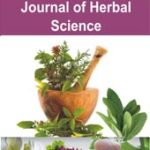
Hardik J Solanki,

Kruti Vyas,

Bharti Umretia,

Bharat Kalsariya,
- Scholar Upgraded Department of Rasashastra & Bhaishajya Kalpana, Government Ayurved College, Vadodara Gujarat India
- Lecturer Upgraded Department of Rasashastra & Bhaishajya Kalpana, Government Ayurved College, Vadodara Gujarat India
- Reader & Head Upgraded Department of Rasashastra & Bhaishajya Kalpana, Government Ayurved College, Vadodara Gujarat
- Professor & Principal Upgraded Department of Rasashastra & Bhaishajya Kalpana, Government Ayurved College, Vadodara Gujarat India
Abstract
In Ayurveda, all skin diseases have classified mainly into two groups i.e., Mahakushtha (major skin diseases) and Kshudrakushtha (minor skin diseases). Tuvaraka [Hydnocarpus laurifolia (Dessnt).Sleumer] is one among the most useful drugs for the treatment of Kushtha (Various skin diseases) and Madhumeha (Diabetes Melitus). Pama is described under Kshudra Kushtha. which can be correlates with scabies. Aim: To evaluate the clinical efficacy of Tuvaraka oil prepared by modified method and Tuvaraka oil prepared by classical method (Pidana method) in Pama (scabies). Methods: In this open labelled parallel arm randomized clinical trial, total 34 selected patients were randomly divided into two groups using computer generated randomization in which total 30 patients were completed the treatment with the dose (external application of BID with placebo 2 Capsules of 500 mg 2 time per day after meal) schedule of external application with duration of 4 weeks. The assessment was done based on the symptoms of the disease. Results: Tuvaraka oil prepared by classical method (Pidana method) and Tuvaraka oil prepared by modified method had a considerable reduction in subjective parameters. Comparison of both the groups indicates, non-significant result observed in Kandu (Itching) and Anukabhi Pidika (Small burrow), while significant result was observed in Paridaha (Burning around). Conclusion: Tuvaraka oil prepared by classical method (Pidana method) is more effective in compare to Tuvaraka oil prepared by modified method in the management of Pama
Keywords: Pama, scabies, tuvaraka [hydnocarpus laurifolia (dessnt).sleumer], tuvaraka oil, tom, top
[This article belongs to Research & Reviews : Journal of Herbal Science(rrjohs)]
References
- Sushruta, Sushruta Samhita of Acharya Sushruta, edited by Shastri Ambikadatta, Nidansthana ch5: ver.5., Chaukhambha Sanskrita Samsthana, Varanasi, reprint 2017, p.320
- Sushruta, Sushruta Samhita of Acharya Sushruta, edited by Shastri Ambikadatta, Nidansthana ch5: ver.14., Chaukhambha Sanskrita Samsthana, Varanasi, reprint 2017, p.322
- Sushruta Samhita of Acharya Sushruta, Nagarjuna, edited with Ayurveda Tattava Sandipika Hindi commentary by Kaviraj Ambikadatta Shastri, forwarded by Dr. Pranajivana Mehta, Nidanasthana 5/33, Reprint, Varanasi: Chaukhambha Surbharti Sansthan; 2014, p.313.
- Scabies [Internet]. Who.int. World Health Organization: WHO; 2023. Available from: https://www.who.int/news-room/fact-sheets/detail/scabies
- Sushruta, Sushruta Samhita of Acharya Sushruta, edited by Shastri Ambikadatta, Chikitsasthana ch13: ver.34., Chaukhambha Sanskrita Samsthana, Varanasi, reprint 2017, p.85
- Kishan K G, Shekshavali. T, Kuppast I.J, Kishan Kumar MA, Jeevanagouda Patil. A Review on Hydnocarpus wightiana. Res. J. Pharmacology & Pharmacodynamics.2016; 8(4): 168-170. doi: 10.5958/2321-5836.2016.00030.6
- Sushruta, Sushruta Samhita of Acharya Sushruta, edited by Shastri Ambikadatta, Nidansthana ch5: ver.14., Chaukhambha Sanskrita Samsthana, Varanasi, reprint 2017, p.322
- https://www.who.int/news-room/fact-sheets/detail/scabies
- b.i.d.p.692.
- Golwala A.F., Golwala S.A., Medicine for student, The National Book Depot, Mumbai, 2000; p.691.
- https://medicalnewstoday.com/articles/16961.php.
- Ahmed, Anwar E et al. “Recurrence rate of scabies in patients 14 years or older in Saudi Arabia.” Saudi medical journal vol. 40,12 (2019): 1267-1271. doi:10.15537/smj.2019.12.24773
- Sushruta Samhita of Acharya Sushruta, Nagarjuna, edited with Ayurveda Tattava Sandipika Hindi commentary by Kaviraj Ambikadatta Shastri, forwarded by Dr. Pranajivana Mehta, Chikitsasthana 13/34, Reprint, Varanasi: Chaukhambha Surbharti Sansthan; 2014, p.85
- Charaka Samhita of Acharya Charaka, Dridhabala, edited by Prof. Rajeshwara Datta Shastri, Prof. Yadunandana Upadhyaya, Prof. Ganga Sahaya Pandey, with Vidyotini Hindi commentary by Pandit Kashinatha Shastri and Dr. Gorakhanatha Chaturvedi, Chikitsasthna 7/30, Reprint, Varanasi: Chaukhambha Bharti Academy; 2016, p.202.
- https://www.google.com/url?sa=t&source=web&rct=j&opi=89978449&url=https://www.ncbi.nlm.nih.gov/pmc/articles/PMC4841791/&ved=2ahUKEwjyvJKO4bmEAxV54zgGHUxnBgsQFnoECB4QAQ&usg=AOvVaw1xDmPXeLnokqrCDvC41nU3
- Sharma P, Dayal R, Ayyer KS. Chemical constituents of Acacia catechu leaves. Indian Journal of Chemical Society, 1999; 60.
- Sharma P, Dayal R, Ayyer KS. Chemical constituents of Acacia catechu leaves. Indian Journal of Chemical Society, 1999; 60.
- Philip W. Wertz, Roles of Lipids in the Permeability Barriers of Skin and Oral Mucosa, International journal of molecular sciences,2021 May; 22(10): 5229.
- Reviews on Indian medicinal plants volume-12, edited by Neeraj Tandon, Indian council of medical research, new delhi, reprint 2013.p.838.
- Aktaş H, Cebecik A. Changes in incidence and age distribution of scabies: A retrospective cohort study in a tertiary hospital. Archives of Clinical and Experimental Medicine. 2019 Mar 3;4(1):21-4.
- Ahmed AE, Jradi H, AlBuraikan DA, ALMuqbil BI, Albaijan MA, Al-Shehri AM, Al-Jahdali H. Rate and factors for scabies recurrence in children in Saudi Arabia: a retrospective study. BMC pediatrics. 2019 Dec;19:1-6.
- Peter l. Jacobsen et al. Mechanism by which hydnocarpic acid inhibits mycobacterial multiplication. American society for microbiology vol.3.no.3
- k.b. rameshkumar chemistry and therapeutic potential of chaulmoogra oil rpmp vol. 33.

Research & Reviews : Journal of Herbal Science
| Volume | 13 |
| Issue | 01 |
| Received | April 5, 2024 |
| Accepted | April 19, 2024 |
| Published | May 7, 2024 |

